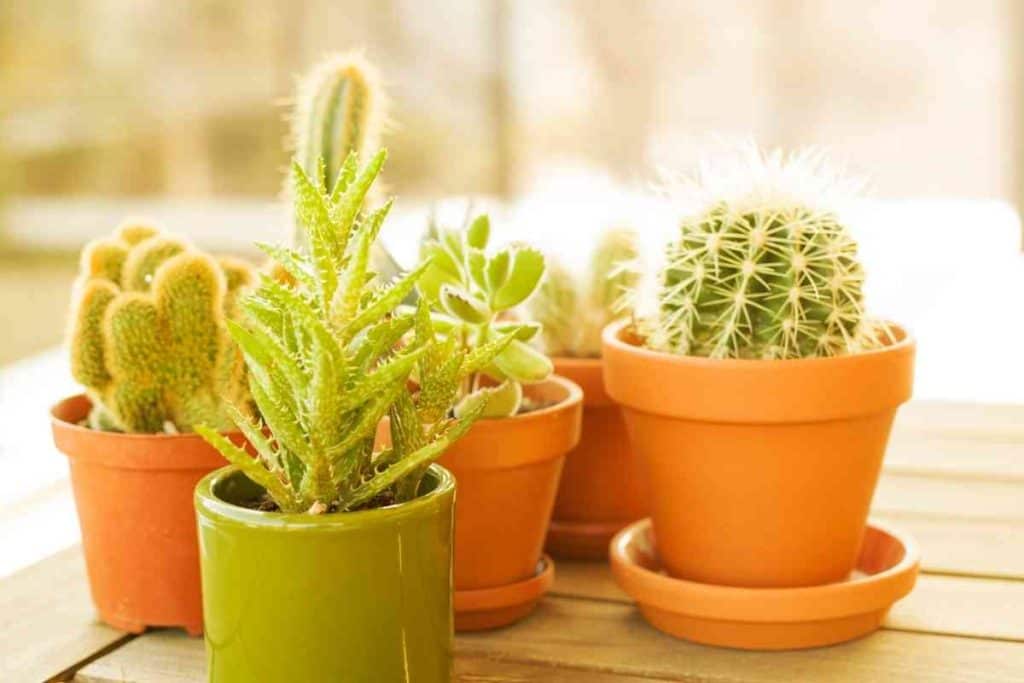A cactus is an angiosperm in the Cactaceae family. This family contains thousands of species distinguished by thick, fleshy stems. But what is cactus classified as? Is a cactus a tree, a plant, or a flower?
The simple answer is no, cactus is not a tree. Cacti are considered flowering plants.
Plants and animals are intertwined in multiple ways! Our very survival is dependent on plants, and their everyday activities, such as releasing oxygen into the surroundings, assisting organisms in breathing, and performing their routine activities.
The plant family is extremely versatile, and countless cultivars are only encountered in warmer areas and plants that are only encountered in deserts. Plants that require a lot of water are found in rainforests, whereas succulents, such as cactus plants, do not require much moisture and are discovered in deserts.
Table of Contents
What is a Cactus?

Cactus is a Latin-inspired term from Greek mythology. Kaktos was the name given to a bristly plant common in Sicily.
However, as time passed, the name became an allusion to the modern plants we know, most of which are desert inhabitants in the wild.
Any of the plants in the Cactaceae family that are distinguished by tough outer, bulbous stems, extravagant flowers, and an absence of leaves and can thrive in an arid environment is a cactus.
A cactus is an angiosperm in the Cactaceae family. This family contains thousands of species distinguished by thick, fleshy stems. Individuals of this family are also known for having showy flowers.
They thrive in the hottest, driest environments and semi-desert habitats. Due to morphological and physiological modifications to water conservation, they can survive in these environments. The plant parts of most cacti, notably the stem, are succulent.
Water is retained within these plant parts. The majority of them also lack true leaves. However, they have adapted foliage that emerges as protrusions on their stem. This feature protects cacti from fluid loss and herbivory. Cacti typically have green stems because they lack true leaves. Photosynthesis takes place primarily in their stems.
See Also: Do Cactus Like Humidity?
Is a Cactus a Plant?
In its most basic form, a plant can be young trees, shrubs, vines, bushes, grasses, or herbs. As previously stated, all cacti species are plants. Cacti are found all over the world and number over 1700 species.
We do have many attributes that distinguish the cactus as a plant, such as:
1. Photosynthetic process
Cacti, unlike other plants, carry out photosynthesis with their stems rather than their foliage. They absorb carbon dioxide at night and use it during the day.
2. Spines of cactus
Cacti have thorns that defend them from animal predation. During the dry spells, the spines also serve as shielding.
3. Unique skin surface
The fact that cacti have smeary spaces that thwart evaporation is one of the reasons they don’t lose lots of water. Some species have rubberized surface areas that keep the plant from partitioning even when it broadens during torrential desert rains.
4. The succulent trunk
A succulent is a type of cactus. A succulent, in other words, is a plant with thick, juicy stalks or leaves that store water. Cactus stems store water, and several species are adjusted to arid environments.
Is a Cactus a Flower?

Yes, cacti are considered to be flowering plants.
Every cactus can bloom, it all varies depending on how well you care for it and how old it is. Some species flower after they have lived for more than 30 years. Some will not flower if they are not exposed to sufficient light. The Holiday cacti can only prosper if the days are short and the nights are long.
Potted cacti must be checked regularly to ensure optimal flowering conditions because they require the proper amount of water, manure, and illumination to flower.
Is a Cactus a Succulent?
Yes, Cacti are also succulents! A cactus seems to be the only plant that can survive in a blistering south window where the sun shines through the glass.
Succulents are any plants that hold water in their juicy leaves, stems, or roots to resist drought periods. Some people disallow bulbous plants like epiphytic orchids, while others include non-fleshy desert plants.
Cactus is a succulent that can hold extra water, classified as a distinct plant (Cactaceae). In contrast, not all succulents are cactus. Succulents do not apply to a particular plant family but are found in over 40 botanical families worldwide.
Is Cactus a Shrub?
They certainly aren’t shrubs! Botanically, a shrub is a plant that lacks a woody stem and passes away after flowering. As a result, the banana is the world’s largest shrub, and you may not acknowledge it, but Agave plants are also shrubs because they are not woody, and they only bloom once before dying.
Some cacti grow in a vining manner, but there aren’t many of them. Vines are botanically described as “any woody creeping plant that produces grapes.” So, by that logic, no cactus is a shrub.
What is Cactus Classified As?
Succulent plants include almost all cacti species, but this is not true of all succulents. Even though cacti do not have leaves and grow in dry areas, some may develop flower buds. Flowers develop in cactus plants only in certain species, not all cacti.
There is, however, a tree that resembles a cactus, also identified as a tree-like cactus from the genus Carnegiea Britton and recognized by the species name C. gigantea. The same plant is not a cactus; it is merely a tree that resembles a cactus. Its name is saguaro. They are tall trees that can reach a height of 40 feet.
Thus, a cactus is described as a plant that is also succulent.
Do Cactus Turn into Trees?

Yes! It’s known as “corking”! So, as a cactus grows larger or older, its base begins to transform into a bark-like substance to help support the cactus and keep it from falling over. Although this is the most advanced case yet seen, that cactus is enormous.
Because cactus flesh is so bulky and their interior is full of water, they are much thicker and bulkier than other plants, necessitating corking.
Frequently Asked Questions
How frequently should a cactus be watered?
It is best to provide more water in the spring and summer and less in the winter. Keep in mind to avoid moisture stress. Permit the soil to dry out a little before watering the plant afterward.
What’s the deal with my cactus flaking?
Fortunately, the problem is easily avoided by altering cultural practices. Corky scab, one of the most prevalent cactus diseases, is believed to be caused by overwatering, low temperatures, and poor ventilation. It is most prevalent in places with plenty of warm moisture in the soil and cool, damp temperatures.
What Causes Cactus Corking?
Over time, a cactus will instinctually cork to protect and support the cacti. The corking procedure is distinguished by a transition in cactus color and texture.
Are cacti all prickly?
No. What we tend to think of as all cacti are desert cacti, though there are forest cacti without spikes; however, please keep in mind that the selection available as potted plants is quite limited.
Does a cactus have flowers?
Cacti are all blooming plants, but some have more notable flowers than others. A few will bloom effortlessly with remarkable, colorful displays, such as Mammillaria, Gymnocalycium, and Parodia.
What is the best place in the house to keep a cactus?
A cactus can withstand a hot and temperate location in the summer, even outside on a patio or balcony. However, in the winter, the location should be cooler and lighter.
See Also: Can You Use Cactus Soil For Regular Plants?
Conclusion: Is a Cactus a Tree?
As you’ve seen, a cactus is a succulent plant, not a tree.
However, given how slim and statuesque cacti can be, it’s easy to understand why people might mistake them for trees.
Cacti vary considerably from trees not only in their basic botanical makeup but also in their photosynthesis processes.




